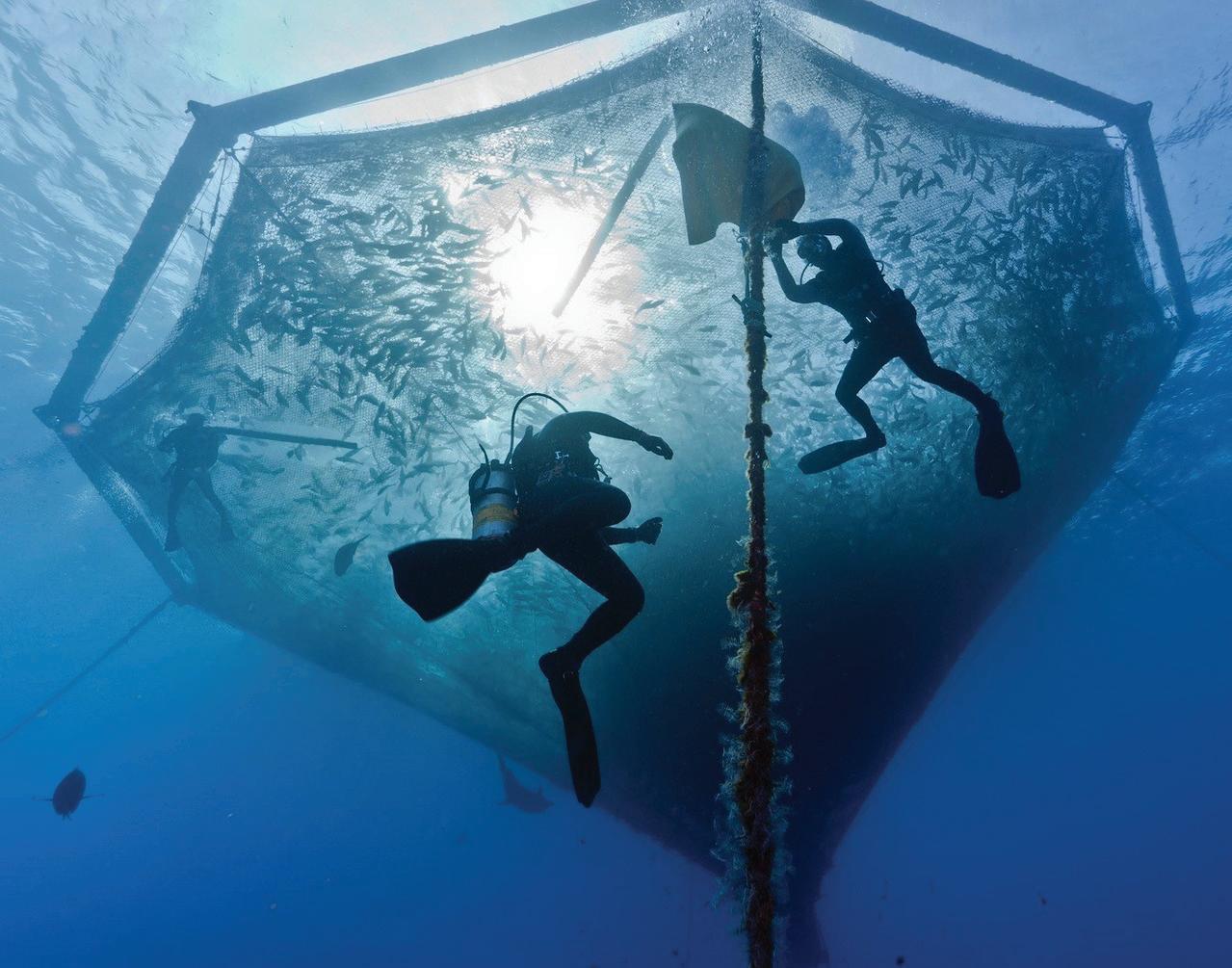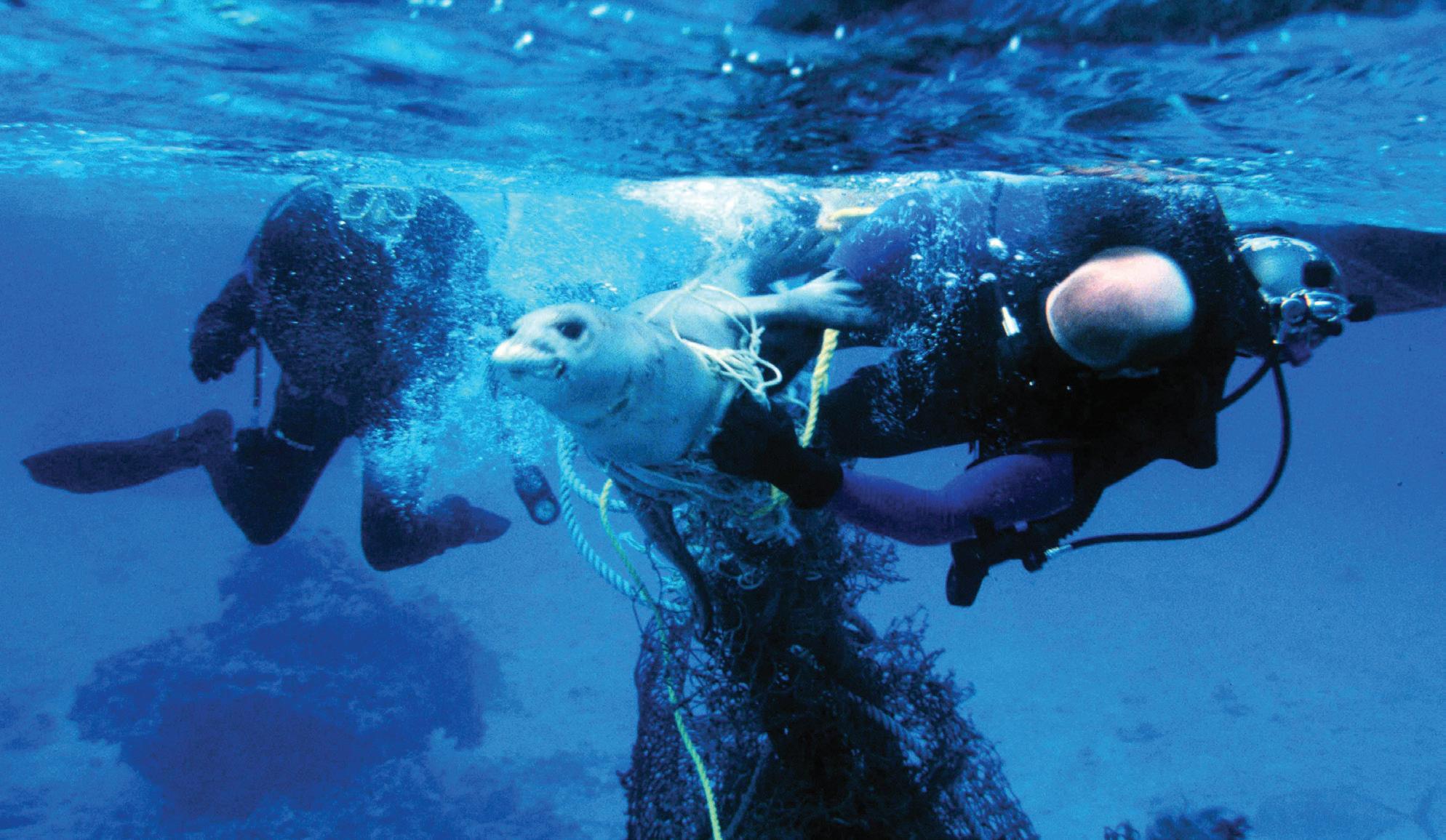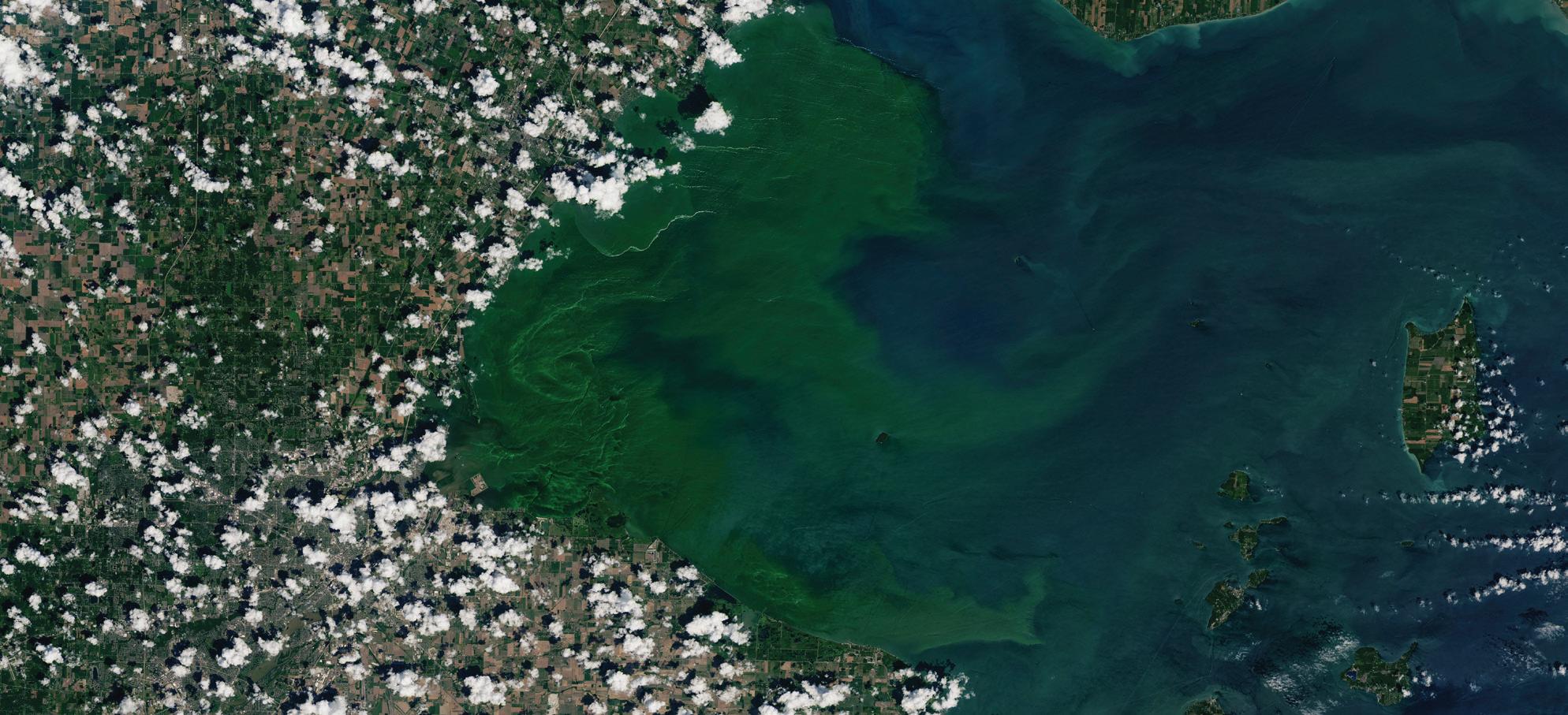NOAA TODAY
The NOAA Diving Program
1923–24
for either the National Marine Fisheries Service (NOAA Fisheries) or the National Ocean Service (NOS). Mostly NOAA divers help to conserve and manage coastal and marine ecosystems and resources, though they do much more, from installing mooring sites in National Marine Sanctuaries to maintaining ships, sensors or buoys. “NOAA diver” isn’t a job title; it’s a designation for anyone certified, through NOAA’s Diving Program (NDP), to perform these and other underwater tasks in the course of fulfilling the NOAA mission. Some NOAA divers are civilian employees; some are commissioned NOAA Corps officers; and some are private contractors. The NDP is administered by NOAA’s Office of Marine and Aviation Operations (OMAO). The NDP provides guidelines, standardized equipment, training and certification for 330 NOAA divers – the largest diving corps of any civilian federal agency. The NDP currently consists of 51 units, located primarily at Fisheries Science Centers, National Marine Sanctuaries, NOS research installations,
Top: NOAA Diver students and a NOAA Diving Center (NDC) instructor prepare to descend into the NDC training tank to complete a check out dive. Above: Curious dolphins enter the area within a diver’s reef visual census survey in St. Croix, U.S. Virgin Islands.
Coast and Geodetic Survey begins use of acoustic sounding systems; develops radio acoustic ranging, the first marine navigation system not relying on visual means for position determination. This system led to discovery of the deep sound channel, the SOFAR channel, invention of telemetering radio sonobuoys, and development of marine seismic techniques. Creation of the Pacific Halibut Commission to conserve that species.
48
NOAA PHOTO BY GREG MCFALL
O
n the website of NOAA’s Marine Debris Program, a video from 2014 shows two NOAA divers, somewhere in the Papahānaumokuākea Marine National Monument in Hawaii, patiently free a young green sea turtle hopelessly tangled in an abandoned fishing net. The one-minute clip has a happy ending: the liberated turtle swims away into the turquoise waters. The divers belonged to a team of 17, sent to remove marine debris from the World Heritage Site. The dive team, in the course of removing 57 tons of derelict nets and plastic litter from the World Heritage Site, found and freed three turtles. When you work in the ocean, as many NOAA people do, sometimes you need to dive. You may need to dive a lot, actually – over the past five years, NOAA divers have averaged about 12,000 dives a year. The vast majority of these are scientific dives in support of NOAA’s mission of science, service and stewardship; while NOAA dives are conducted for each of the agency’s six line offices, most are performed
NOAA PHOTO BY GREG MCFALL
By Craig Collins









































